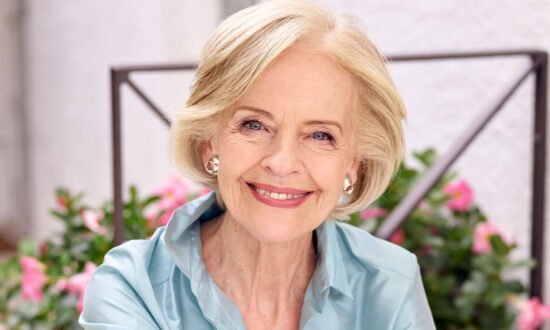The Chanel brand embodies class, timelessness and a certain je ne sais quoi that has kept it relevant since its inception in 1910. Everyone has heard of Chanel with most understanding its significance and influence, both in the luxury space and in our collective culture.
You don’t have to be trolling through the pages of Vogue to know some signature elements: strands of pearls, quilted bags, suits in fabulous fabrics or the iconic scent Chanel No.5.
What your average punter might not know is the story of the woman behind the brand, or the revolution her clothing created. Her impact is historically acknowledged.
She is the only fashion designer that Time magazine named as one of their 100 most influential people of the last century. Why the major influence? Coco Chanel was a maverick, someone who single-handedly dragged women’s attire and the idea of femininity out of the Victorian age, giving birth to the way modern women dress.
Prior to Chanel’s influence, women were trapped in corsets, multiple layers of fabrics, hoops and generally uncomfortable clothing. These standards of style had held firmly in place and Coco Chanel was looking to overthrow them. She recognised that this “is not how women should dress, but how men wanted women to dress”.
Chanel sought practicality and freedom for the women who wore her designs, doing away with constraint and championing movement. She made a model sit, stand, bend over and climb stairs to determine if her clothing had the ease she required. She wanted to make designs “where women could breathe, eat and drink without actually fainting”.
As she began her fashion revolution, she worked at inverting ideas of luxury. She embraced costume jewellery, beforehand considered gauche in polite circles, and she used a lot of it to add flair and style. She chose jersey as a fabric, despite its prior use mostly for men’s underwear and fishermen’s clothes. She had vision for a new era, unabashedly making and wearing clothing totally contrary to the current times.
A wonderful depiction of this is in the movie Coco Avant Chanel, a French-language film by Anne Fontaine, that I highly recommend. The beguiling Audrey Tatau plays the young Coco with the sort of quiet but fierce strength you imagine Chanel herself must have possessed.
In one scene, after Chanel creates an outfit for herself with the remnants of her lover’s suit, she begins to craft her signature look. She scissors his shirts for the white collars and cuffs she attaches to simple plaids. In another scene, as she joins a raucous social gathering in full swing, she looks like a cross between a boy and a schoolgirl compared to the glittery tulle gowns at the party. But she wore this new look with the bravery and confidence that defined her style and today still defines the modern woman.
Later in the film, Chanel garners admiring looks and stands out in chic elegance after showing up to a formal event in a simple black gown. Not only did this stun those in attendance, but it ultimately elevated the colour black and became the genesis of the little black dress. A colour previously relegated to mourning suddenly became the staple of all sophistication, a change that still holds today in any urban centre.
Coco Chanel, born Gabrielle Bonheur Chanel (Coco is a nickname), grew up with her five siblings in one-room housing in the town of Brive-la-Gaillarde. She and her sisters were placed in a Catholic orphanage by her father at the age of 11 when her mother died. Though an austere and strict life, she did benefit from the seamstress skills that the nuns taught them.
Forced to leave the orphanage at 18 years of age, Chanel and her older sister had a turn at performing, but their talents did not translate into fame or money at the La Rotone in Moulins, Allier, where they sang in the evenings. But here she meets and ultimately becomes a mistress of the textile heir Étienne Balsan, and later his friend Arthur Edward Chapel who provided her with her first financing to open Chanel Modes in Paris on Rue Cambon, where it still exists today.
Her relationships with men, some who loved her, some who were infatuated with her, enabled her to both launch her business and gave her entrée into a social class far from her childhood struggles. Maybe because she was not born into this world, she had an uncanny ability to be outside the fold and be comfortable with it, not needing to fit in, but rather determined to embrace ideas on the edge.
After Chapel was killed in a car crash, she spent time with the Duke of Westminster, where it is said she developed her love of tweeds. Supposedly her famous double C logo was inspired by the lamp posts in Westminster. Her subsequent friendship with Winston Churchill, made possible by the Duke, may have saved her from prosecution following WWII for having an affair with a German officer during the occupation.
There is even a rumour she was a spy for the resistance, though unconfirmed. Her famous fight with the Wertheimer brothers, her subsequent comments, and her struggles to regain the financial control of Parfums Chanel from these Jewish partners, had many calling her an antisemite or at least a collaborator after the war.
Despite the men and the controversies of her unconventional life, Chanel was truly married to her creativity and her business. Because women loved wearing the new styles she offered them, Chanel quickly paid back all initial financing and ran the brand Chanel as both successful enterprise and an on-the-pulse cultural force.
Being part of the new artistic movement in Paris which included cubism and abstract art, and with a keen intelligence and creative energy, she hobnobbed with other artists, cultivating a salon with Cocteau and Picasso, among others. She was plugged into the café society, doing artistic collaborations including designing dance costumes for the Ballets Russes.

Get InReview in your inbox – free each Saturday. Local arts and culture – covered.
Thanks for signing up to the InReview newsletter.
How fitting now that a ballet has been devoted to her created in collaboration with Hong Kong Ballet, Atlanta Ballet and our very own Queensland Ballet, and how exciting that the life of such an iconic woman will be represented by an art form she contributed to in her lifetime.
Coco Chanel: The Life of a Fashion Icon, October 4-19, Playhouse, QPAC; queenslandballet.com.au
Laurie Marsden is a writer, psychotherapist and activist. A former top model in the 1980s-’90s, her upcoming memoir MEN and me too reflects on power, integrity, love, lust and relationships with men in that era. A New Yorker with a passion for art, Marsden lives in Brisbane. @Laurie.Marsden
Support local arts journalism
Your support will help us continue the important work of InReview in publishing free professional journalism that celebrates, interrogates and amplifies arts and culture in South Australia.
Donate Here




